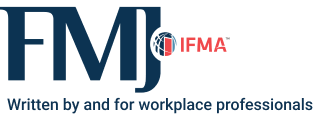On Standards
Creating a Knowledge Management Strategy
In April, ISO 41001 Facility management – Management systems – Requirements with guidance for use will celebrate its first birthday. There has been a lot of interest in this standard, and organizations around the world have been offering training to help facility managers familiarize themselves with the standard and the benefits to a management system for facility management. This article takes a deeper dive into one sub clause of ISO 41001, sub clause 7.6, Organizational knowledge.
The turn of the century, armed with internet search engines, social media and immediate answers to questions we didn’t even know to ask, has opened the door for information tidal waves. Unfortunately, the deluge of unvetted information and the aging workforce are significantly impacting the current state of organizational knowledge for the FM world. For example, this year every Baby Boomer will be 55 years or older, and more than 50 percent of FM practitioners will be retiring in the next five to 15 years. For the sixth consecutive year, skilled trade positions are the hardest to fill globally (Manpower Group 2018 United States talent shortage survey), and only one percent of college students think they will enter a career in facility management. All of these facts strengthen the trending need for prioritizing organizational knowledge for the successful continuation of FM organizations.
This closed loop cycle perpetuates a learning organization that can adapt and respond to industry changes. While the competencies, knowledge and skills facility managers need have been defined at high level by IFMA’s Global Job Task Analysis and the Federal Buildings Personal Training Act (FBPTA) as well as several college and university programs around the world, it is unlikely that many FM organizations have an established and documented knowledge management (KM) strategy to preserve and transfer their organizational knowledge. Organizations rely on the experience of their workforce — experienced facility managers whose knowledge is largely tacit and for whom the documentation of that knowledge is a priority far behind the fires of the day.
Sub clause 7.6 states that “the organization shall determine the knowledge necessary for the operation of its processes and to achieve conformity of products and services.” It was important for the contributors of the standard that this clause was included in the management system standard as a measure of addressing business continuity and managing risk.
“You can never extract and transfer all the deep smarts that an expert has accumulated, but it’s important to identify what needs to be captured before it walks out the door,” according to HBR. “In-depth succession planning, knowledge-sharing programs, even just questioning the experts before they leave the organization are imperative steps to ensure that your organization’s deep smarts stay within the walls of your organization.”

Sub clause 7.6 was included to address these and other issues associated with the lack of knowledge transfer. The guidance provided in ISO 41001 further states “organizations rely on the knowledge and experience of their personnel to execute their operational plans. [Knowledge management] is therefore necessary for a robust management system to be capable of delivering consistent conforming outputs that such knowledge is captured and is retrievable. Such knowledge may be used during planned or unplanned change or for innovation and service development. Systems should be in place to prevent loss of such knowledge due to personnel leaving the organization’s employment, becoming demotivated, or becoming ill.” (ISO 41001, A.7.6)
The organizational knowledge chart illustrates a simple knowledge management framework for building organizational knowledge. Embedment of this framework into a continuous capture and transfer loop is essential for building knowledge content and maintaining relevant and timely applicability. If an organization does not already have a formal knowledge management strategy, there are four steps to begin the journey.
-
First, connect KM strategy to business strategy by asking what knowledge is necessary to achieve the demand organization’s core business objectives.
-
Second, identify critical knowledge by assessing the likelihood of knowledge that may be lost, as well as the consequence associated to the knowledge loss.
-
Third, determine how knowledge is currently shared in the organization and build from that framework.
-
Fourth, build a build a business case for knowledge management with a clear value proposition for why it is important to the FM organization.
A knowledge management plan, like any other part of the ISO management system standard, requires continuous monitoring, realigning, and improving. If the organization already has a formal knowledge management strategy, consider organizational changes — such as changes in business strategies or priorities, culture or business processes, and business applications or tools (including new technology) as a call to review and renew that strategy.
If it is not clear whether the organization truly needs a knowledge management strategy and capture plan, then ask what the potential impacts of not being prepared may entail. Begin to quantify the time wasted and opportunities lost as the knowledge resources retire and skilled trades become scarcer with each passing year. Consider what happens to the FM organization if a knowledge management program simply isn’t there. This is especially true as the external environment imposes a world of changing conditions, an aging workforce and technological advancements.
Implementing a knowledge management plan in advance of known business impacts, such as an impending retirement bubble, can improve the organization’s decision-making speed, ability to deliver, the speed of new employee ramp-up, employee retention and organizational adaptability.

Laverne Deckert is an Independent consultant, working with organizations to creatively respond to their challenges. She has led research, educational programs, standards, and community development initiatives in the corporate real estate and FM industry. Her primary goal is to bring value to every interaction. Her colleagues value her curiosity and creativity, ability to organize complex information, to facilitate teams in meaningful collaboration, and her focus on strategic goals. Deckert currently as Administrator for the U.S. Technical Advisory Group Administer on behalf of the American National Standards Institute (ANSI) for ISO/TC 267 and as the convenor for ISO/TC 267/AG 1 – Roadmap Advisory Group.

Casey Martin has more than 20 years of building industry experience and is currently engaged in the asset management strategies practice at Jacobs Engineering. In this role, she consults with private and U.S. federal institutions, providing full life cycle perspectives throughout project development stages. Her approach considers important long-term views such as total cost of ownership, reliability-centered maintenance practices, operation strategies, and processes and policies to align asset management with business and mission objectives.
References
JLL Infographic: www.slideshare.net/JLL/the-challengeof-attracting-millennials-to-integrataed-facilitiesmanagement
IFMA Foundation: https://foundation.ifma.org/docs/ default-source/gwi-resources/gwi-prospectus-singlepages.pdf?sfvrsn=2
Manpower Group: https://go.manpowergroup.com/ talent-shortage-2018#hardesttofillroles
FBPTA: fm.training/sites/collabstore/fi les/images/ Competency_Guide_Context_Public_v1_7-12-18.pdf
FEDSAT: sftool.gov/fedsat 6. Harvard Business Review: https://hbr.org/2014/12/ whats-lost-when-experts-retire
Read more on Standards and Leadership & Strategy
Explore All FMJ Topics






